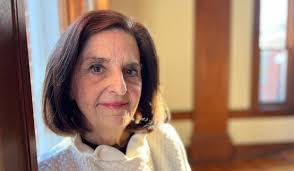The Diversity Plan Committee will not reach its goals by 2015, according to committee members.
The DPC was announced in 2009 and has been working since 2010 to make Guilford College more diverse and integrated. The committee comprises multiple subcommittees that oversee different areas of campus life. For example, there are subcommittees who look at diversity in the curriculum, co-curricular activities, recruitment and accessibility.
“Diversity is more than just numbers,” said Bob Williams, co-chair of the main DPC and professor of economics. “It may be that we have a diverse campus in terms of people and facilities, but that doesn’t necessarily mean that everyone is fully integrated.”
In terms of numbers, Guilford can certainly make the claim that the campus is diverse. Forty percent of students in the class of 2018 are members of underrepresented minorities. However, committee members like Bonner Center Director James Shields emphasized the importance of breaking students out of their in-groups.
“Institutionally, we need to do better,” said Shields. “One of the goals of the committee is trying to get clubs, events and organizations to reach out to the whole community. In terms of diversity, we have a long way to go.”
The majority of the committee members interviewed for this article, including Williams, expressed the same sentiment. Each stressed that diversity and accessibility were continuous goals of the College and that wanting to complete them in five years might have been too ambitious.
“I’m sure we won’t accomplish all the goals as well as we would like by 2015,” said Williams. “It’s ongoing work. However, I think the committee has raised awareness in terms of these issues of diversity and accessibility and encouraged people to participate in diversity workshops.”
Williams stated that the curriculum committee recently submitted a report that concluded that little improvement has been made in terms of teaching diversity in the classroom since we started the Diversity Plan.
“It takes time, faculty and expertise,” said Williams. “Just hoping that it will happen on its own, which was largely how things were before the plan, isn’t going to work.”
In reality, the work will never truly be completed.
In fact, Melissa Daniel Frank, director of the Learning Commons and the committee member focused on accessibility, stressed that work with accessibility would never be final.
“Accessibility can never be completed,” said Frank. “Every time you renovate a building, plan an event or bring in a new faculty and students, we need to keep accessibility in mind and make sure that people are educated about it.”
This might not be a surprise to people familiar with the 58-page document outlining the diversity plan. The language of the document emhasizes the fact that the plan is part of a “transformational process.”
“We have to want to achieve the goals of the plan, which is to make Guilford College a more diverse and inclusive college,” said Shields. “I truly believe if we achieve that, we will retain more students, our students will perform better, and … our graduation rates will go up. Not only that, but I think parents and prospective students will look at what this plan has done and say that they feel safe and confident in being heard.”
If you want to make your voice heard on this issue, Williams encourages interested students and faculty to contact him or any of the committee members listed above to participate on the committee.
Parker Hurley, LGBTQQA coordinator and committee member, emphasized that for diversity to happen, the whole College needs to be involved.
“I think it’s really hard, especially at a college like Guilford, where the rhetoric is there, but sometimes the resources, intentionality and maybe even accountability is not pervasive throughout the school,” said Hurley. “It really has to be an institution-wide advance.”






